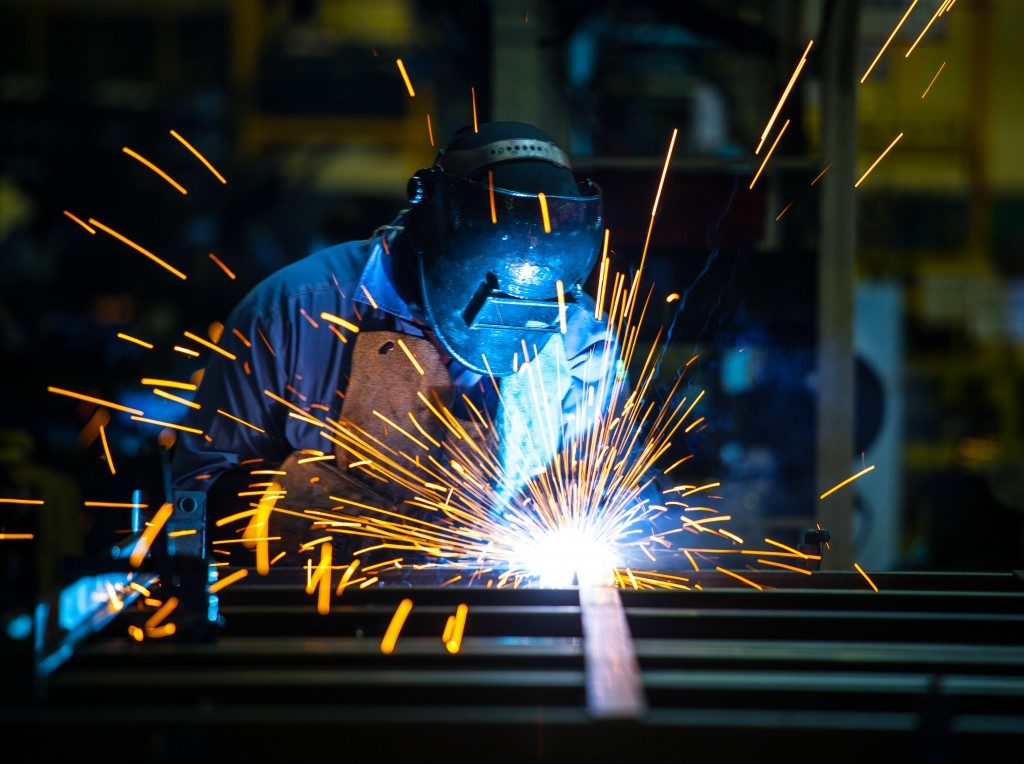Mastery of technique in material and metal fabrication can improve speed and quality. Stick welding is a form of arc welding that requires greater skill than other types of welding. Specific strategies can increase the likelihood of a successful stick weld.
Steel within Normal Range
It’s important that welders select steel that lies within the normal range. This refers to steel with a minimal amount of silicon and sulfur. The right amounts allow the stick welding process to proceed more smoothly as they can be welded at high speeds and with minimum cracking.
The use of low alloy or carbon steels with silicon and sulfur compositions are more likely to experience cracking, especially if they are welded on heavy plates and rigid structures. They’ll need special instruction and precautionary measures to prevent this from occurring.
Joint Position and Geometry
The joint position can significantly influence the quality of a finished weld. Welders need to determine the angle to position the work depending on the size of the gauge sheet steel. Over-welding or making welds larger than necessary can lead to a burn-through, or a hole between the steel.
There are several principles that support proper joint geometry.
The fit-up should be consistent throughout an entire steel joint. If there are any variations, the operator has to adjust their speed, slowing down welding time because they have to manipulate the electrode and make adjustments for the variation. These measures can prevent the occurrence of burn-through.
In addition, welding requires a sufficient bevel length to ensure good bead shape and penetration. This is done to ensure the steel doesn’t end up cracking. It is also necessary for a sufficient root opening consistent and large enough for the electrode’s diameter.
Buildup and Over-welding
It’s important that fillets have equal legs and a largely flat bead surface. Buildup on the surface should be minimal, as excess is costly in terms of material and time. Additional buildup also doesn’t add to weld strength and may even cause distortion.
Welders should ensure joint surfaces are clean before welding begins. This involves getting rid of excessive scale, moisture, rust, paint, and grease to maintain the ideal weld travel speed. If cleaning is not possible, electrodes can be used to get through to the contaminants and into the base metal.
Electrode Size
The larger the electrode is, the higher the currents they weld need to weld at in order to reach high deposit rates. It’s often most practical to use larger electrodes in order to maintain consistent and good weld quality. However, the size used can be limited on sheet metal and root passes because of the possibility of burn-through. The dimensions of the joint itself may also minimize the electrode’s diameter.
Cracking Defects

All types of cracks could occur throughout a weld. They can eventually lead to complete weld failure. Often, cracking occurs because of high carbon, sulfur, or alloy content in the base metal.
To avoid this, welds should use low hydrogen electrodes. High preheats are necessary especially for welding heavier plates and rigid joints. The more rigid a part is, the more prone to cracking they are. It’s safer to weld toward the unrestrained end and to leave a gap between the plates to leave room for shrinkage as the weld begins to cool.
These steps and measures can increase the likelihood of a high-quality weld.


